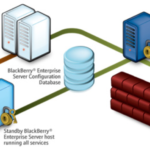As an owner or operator of Caterpillar machines, you’re undoubtedly aware of the critical role they play in various sectors. However, like all heavy machinery, they can occasionally run into problems that can disrupt your workflow. But don’t worry! This article is written for you, designed to be your handy guide for understanding and fixing some of the most common Caterpillar machine issues. We’ll demystify common problems and offer simple, step-by-step solutions.
General Tip: Ensure your machineries are well-maintained and regularly checked to prevent these highlighted issues in the first place. It’s a good habit to keep browsing through your machine manual constantly and keep the contact of a reliable technician handy.
“Preventive maintenance is better than breakdown maintenance. An ounce of prevention is worth a pound of cure.”
So, without further ado, let’s delve into the mechanics of common Caterpillar machine problems and their fixes.
1. Overheating Engines
One of the most common issues Caterpillar machine owners encounter is an overheating engine. Typically, this is caused by an overworked cooling system or issues with engine coolant.
- First step: Check the coolant levels. If they’re low, simply replenish the coolant. Remember, never open a hot radiator cap, as it may result in severe burns.
- Second step: If the coolant levels are fine, inspect the radiator and the hoses. Look for blockages, leaks, and worn-out parts that might need replacing.
2. Undercarriage Wear and Tear
As the foundation of your Caterpillar machine, the undercarriage takes on the most wear and tear. Neglecting maintenance can lead to costly repairs and downtime.
- First step: Regularly clean the undercarriage. Debris, dirt, and rocks can accelerate wear and even damage the undercarriage components over time.
- Second step: Routinely check and adjust the track tension. A too tight track can lead to increased wear, while a too loose track might derail.
3. Hydraulic System Failure
Hydraulic system failure can significantly harm your Caterpillar machine’s productivity and efficiency. Often, this issue stems from contamination, leaks, or air in the system.
- First step: Regularly change and check your hydraulic fluid levels. Next, inspect the system for leaks. Small droplets of oil can indicate a problem.
- Second step: If a leak isn’t the issue, check for contaminants in the fluid. Common contaminants like dirt, water, or air can be caught early on with frequent inspections and timely fluid changes.
| Problem | First Step | Second Step |
|---|---|---|
| Overheating Engine | Check the coolant levels | Inspect the radiator and hoses for blockages |
| Undercarriage Wear and Tear | Clean the undercarriage regularly | Routinely check and adjust the track tension |
| Hydraulic System Failure | Regularly change and check hydraulic fluid levels | Check for contaminants in the fluid |
Remember, regular preventative maintenance is key to extending the life of your Caterpillar machine. Dealing with minor problems before they turn into major ones will save you time, money, and headaches in the long run.
Understanding Caterpillar Machine Problems
Whether you are a seasoned contractor or a new entrant in the industry, your machinery’s performance is often the key to the job’s success. Caterpillar machines are renowned in many sectors for their performance, durability, and efficiency. But, just like any other mechanical equipment, they are vulnerable to several common problems.
Firstly, overheating engines are a common issue with Caterpillar machines. This can be due to various factors like low coolant levels, clogged radiators or faulty thermostats. Overheating can cause significant damage to your machine, and if not addressed promptly, it can result in costly repairs.
Secondly, the undercarriage of a Caterpillar machine is subjected to constant wear and tear. This undercarriage includes components like tracks, rollers, and idlers which can get worn out if not properly maintained and inspected regularly. This can negatively impact your machine’s performance and durability due to uneven wear or even breakage.
Lastly, hydraulic system failure is another potential problem. This can stem from air or water contamination, heat exposure, and component wear, amongst other issues. A faulty hydraulic system can incapacitate your machine and incur significant downtime and repair costs.
Remember, the understanding of these common issues is the first step to prevention and timely repair. Regular inspection, careful operation, and preventive maintenance can go a long way in ensuring your Caterpillar machine’s longevity, efficiency, and optimal performance, saving time, energy, and resources in the long run.
Uncovering the Most Common Caterpillar Machine Issues
When it comes to heavy machinery, Caterpillar is a renowned name in the industry. With their reputation for durability and strength, one might assume that Caterpillar machines are immune from problems. However, like all machinery and equipment, Caterpillar machines have their own set of common issues that can arise, especially with constant or improper usage. Let’s explore the most common problems you might encounter with your Caterpillar machine and how they can be addressed.
1. Overheating Engines
The first common issue we’ll address is engine overheating. Prolonged operation, insufficient coolant levels, or a malfunctioning cooling system are common causes of engine overheating. It might sound serious, and it can be if left untreated. However, it’s generally an easy fix if caught early.
- Maintain Coolant Levels: Keep an eye on the coolant levels and refill as necessary. Never operate your machine with low coolant levels.
- Check Cooling System: Inspect your machine’s cooling system for blocked airways, coolant leakage, or failure of the cooling fan. Seek immediate repairs if issues are detected.
2. Undercarriage Wear and Tear
Managing the undercarriage of your Caterpillar machine is absolutely crucial, as it often represents half of your total machine operating costs. If you’re noticing that your machine isn’t performing as it should, there’s a chance that you’re dealing with wear and tear on the undercarriage.
Typical signs of undercarriage problems include excessive vibration, track loosening, unusual noises, and irregular tread patterns. These symptoms not only diminish the efficiency of your Caterpillar machine, but they could also lead to more critical damage if left unchecked.
So, what causes this wear and tear? Over time, common incidents like continuous operation on harsh surfaces, high-speed movement, and incorrect track tension can all contribute to undercarriage wear. Failing to maintain cleanliness can further accelerate this process as debris may get stuck in the undercarriage, causing damage.
How to Fix Undercarriage Wear and Tear
Addressing undercarriage wear and tear involves regular inspection, correct operation, and preventative maintenance. Here are some steps you can take to mitigate the impact:









